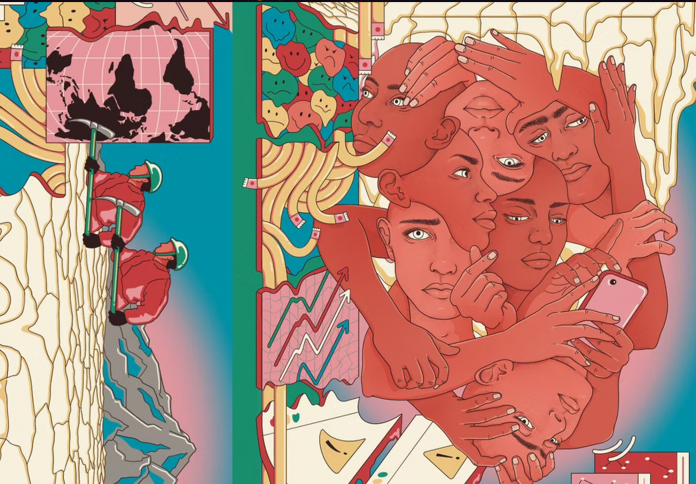Decades after J.R.R. Tolkien completed his epic fantasy cycle, including “The Lord of the Rings” and “The Hobbit,” the world continues to search for the real-life inspirations that shaped the mythical continent of Middle-earth. Contrary to popular belief, the peaceful homeland of the Hobbits or the glittering caverns of the Dwarves were not entirely products of pure fantasy. From the verdant countryside of Lancashire and Birmingham to the majestic limestone gorges of Somerset, England provided the physical and emotional groundwork for Tolkien’s fictional land. This journey of discovery not only follows the author’s footsteps but also unveils the hidden historical and cultural stories that he skillfully wove into his narratives, proving that the most marvelous wonders often originate in the most familiar and beloved places.
The Shire: The Tranquil Countryside of Tolkien’s Youth
The Shire, the beloved home of the Hobbits, was deeply inspired by the rural area where Tolkien spent his formative years. The surroundings of Sarehole Mill on the outskirts of Birmingham, where Tolkien lived after returning from South Africa, served as the direct model for Hobbiton. Sarehole Mill, with its ancient water mill and preserved environment, was described by Tolkien as “a kind of lost paradise,” a place largely untouched by the industrial industrialisation that was rapidly transforming England in the early 20th century.

Tolkien even incorporated small, specific details from Sarehole into his work. The unusual chimney on the real-life mill is reflected in his own illustrations of the mill in Hobbiton. Furthermore, the miller’s son at Sarehole, whom Tolkien called the “White Ogre,” is widely believed to have inspired the character of Ted Sandyman, the surly miller’s son in Hobbiton—a rare negative character in the idyllic Shire. Nearby, Moseley Bog—a wild, overgrown area of wetland and trees that Tolkien explored as a boy—is considered the emotional prototype for the eerie Old Forest that lies on the borders of the Shire.
Another location in England often cited as a likely inspiration for the Shire, particularly during the time Tolkien was writing The Lord of the Rings, is the Ribble Valley in Lancashire. In the 1940s, Tolkien frequently visited Stonyhurst College, where his son was a student, and spent much time walking the area’s woodlands and hills. The hiking route known today as the Tolkien Trail passes points with remarkable resemblance to Middle-earth locations, such as the confluence of three local rivers which mirrors the arrangement of three key rivers in the Shire’s geography. Most notably, Hacking Hall nearby, which historically operated a ferry service across the river, is widely believed to be the inspiration for the Bucklebury Ferry in The Fellowship of the Ring.
Cheddar Gorge: The Glittering Caves of Helm’s Deep
While much of Tolkien’s geographic inspiration remains speculative inference by fans and scholars, he personally confirmed the real-life source for one of his most memorable locations: the Glittering Caves of Aglarond beneath Helm’s Deep. That source is the stunning Cheddar Gorge in Somerset, England.
Tolkien and his wife, Edith, spent their honeymoon nearby in 1916 and explored the magnificent limestone caverns of the gorge. In a letter written in 1971, Tolkien revealed that the sparkling stalactites and stalagmites, which he described as crystalline columns inside the caves beneath the Hornburg fortress, were drawn from his vivid memory of visiting Cheddar Gorge.
Visitors today to Gough Cave can still witness rock formations that create a grand, breathtaking spectacle, strongly evoking the atmosphere of the Rohan people’s final refuge. This specific, confirmed influence demonstrates how even a brief visit to a natural wonder could lodge itself in the author’s mind for decades, ultimately becoming a critical setting for his epic war of the Ring.
Khazad-dûm and The Secret Doors of Durin
One of the most striking visual motifs in Tolkien’s mythology is the Doors of Durin, the secret entrance to the vast underground Dwarven city of Khazad-dûm (Moria). The visual inspiration for this image is thought to have been found in the architecture and nature of St Edward’s Church in Stow-on-the-Wold, Gloucestershire.

The church’s north door is a unique sight, framed by two ancient yew trees that have grown over centuries to intertwine and envelop the stone archway, forming a natural, organic frame. The strange and evocative resemblance between this peaceful, tree-shrouded entrance and Tolkien’s own illustration of the secret door leading into the Dwarven kingdom has fueled speculation that this specific detail was a key visual spark for his imagination.
The visual parallel highlights how nature and architecture together can suggest deep, forgotten pathways into a mythical past, perfectly capturing the sense of ancient secrets and natural guardianship that defines the entrance to Moria, which was closed off from the outside world for centuries.
The Misty Mountains and The Elven Valley
While rural England provided the inspiration for the Shire and other earthly settings, the towering Misty Mountains and the secluded Elven valley of Rivendell (Imladris) have their roots in Tolkien’s European travels. In 1911, before the First World War, Tolkien embarked on a momentous walking tour across the Swiss Alps.

He was particularly struck by the Lauterbrunnen Valley, an area characterized by sheer cliff faces, cascading waterfalls, and majestic surrounding peaks. Tolkien himself confirmed that Bilbo Baggins’ epic trek across the Misty Mountains in The Hobbit was based on his personal hiking experiences there. The dramatic, jagged profiles of the mountains—including the famous peaks of the Eiger, Mönch, and Jungfrau—are widely believed to have served as the inspirational templates for the vast, unforgiving heights of the Misty Mountains.
The unique atmosphere of Lauterbrunnen, with its sheltered yet grand scale, also provided the perfect blueprint for the hidden beauty of Elrond’s sanctuary in Rivendell. This blend of European grandeur with British pastoralism gave Middle-earth its remarkable geographical depth and variety, spanning from cozy valley homes to perilous alpine passes.
Lydney Park and The Ring of Power’s Lore
Not only geography, but also Tolkien’s scholarly work in philology and archaeology profoundly influenced Middle-earth. In 1928, he served as a consultant for an archaeological excavation at a Roman temple site in Lydney Park, Gloucestershire, an area locally known as Dwarf’s Hill. The region was steeped in Celtic lore, and the Romans later believed the site was inhabited by hobgoblins (a potential linguistic link to hobbits) and dwarves.

The excavation uncovered a Roman temple dedicated to the Celtic god Nodens, along with a bronze tablet inscribed with an ancient curse concerning a stolen and cursed ring of the god Silvanius.
The combination of the stolen ring, the ancient curse, and the presence of “Dwarf’s Hill,” all researched by Tolkien just before he began writing The Hobbit, strongly supports the belief that his scholarly work at this very location directly contributed to the development of the central plot device—the One Ring—and the cultural history of the Dwarves in his legendarium. This illustrates that the true magic of Middle-earth often lay in the ancient myths and history he unearthed in his own backyard.










